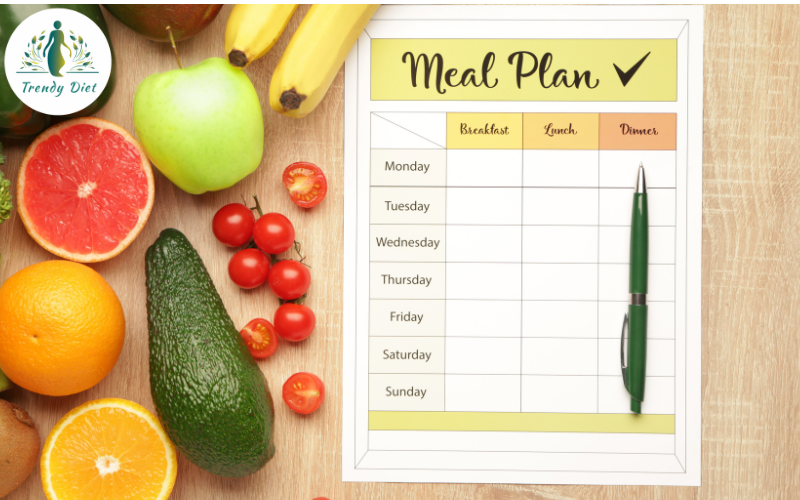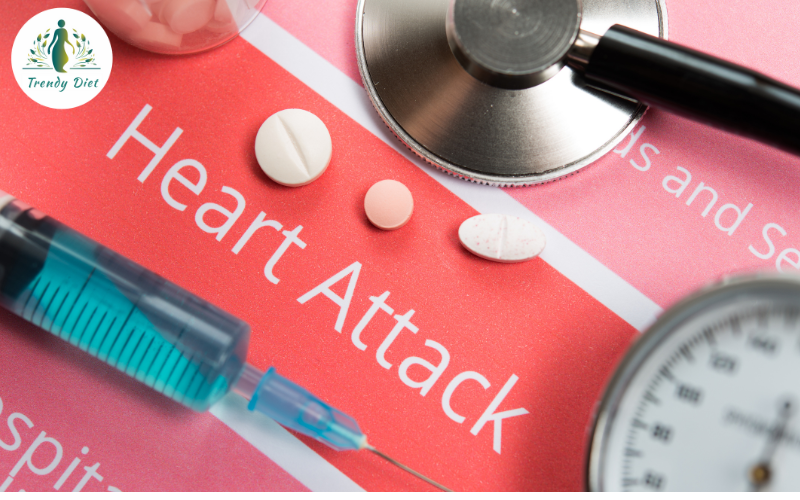Diet after a heart attack and stent plays a vital role in preventing further heart problems and improving health in general. This article discusses how to eat for optimal recovery after a heart attack and stent placement.A heart attack is one of those life-changing incidents, and the journey to recovery includes massive lifestyle changes.
Having had or going through instances of a heart attack and having a stent put in are, without a doubt, two life-altering events. Nevertheless, after someone has undergone such salvage procedures to restore normal blood flow to his or her heart, it is fundamental that the correct diet after a heart attack and stent done accordingly to guarantee improved recovery and not fall victim to more cardiovascular complications. This paper explores the food considerations to assess an individual post-heart attack and also stent placement, categorised objectively as pro-heart foods and unhealthy heart foods contributing to assisting and decreasing heart damage or risks, respectively.

Things to focus on in Diet after a Heart Attack and Stent
A heart-healthy diet is essential after a heart attack or stenting. It helps to bring down blood pressure and cholesterol and reduces the risk of future cardiac events.A stent is placed after the heart attack; people need to heal, and after the heart attack and placement of the stent, the heart needs to be treated special. A good diet may help keep your body in shape to regulate your cholesterol levels, blood pressure, and weight—all of which are critical factors in staving off further heart trouble.
Below is the list of things to be follow when under taking diet after a heart attack and stent placement to further keep yourself away from danger.
1.Healthy Fatty Diet
Fatty foods are not all the same. Bad fats raise your cholesterol and risk for certain diseases; good fats protect your heart.
Source: Also, the benefits of fish, flaxseeds, chia seeds, and walnuts, which are rich in omega-3 fatty acids. Monounsaturated fats from olive oil, avocados, and nuts are also good.
Control the intake of: Both the saturated fats from red meat, and full-fat dairy products and from processed foods. The presence of transfats in baked foods and fried foods should be limited as far as possible.
2. Increase intake of fibre
Fiber plays an important role in bringing down the cholesterol level and keeping weight in check.
Include: Whole grains like Oats, brown rice, quinoa, fruits like apples, berries, oranges, and vegetables. Intake: at least 25-30 g of fiber on a daily basis.
Exclude: food items such as fins and sugars, high in refined grains which enhances the blood sugars whilst gaining the weight.
3. Emphasize fruits and vegetable
Fruits and vegetables are an excellent source of vitamins, minerals, and antioxidants crucial to heart health.
◦Consume a wide array of colourful fruits and vegetables. Some of the best options to include are dark leafy greens (spinach and kale), berries, citrus fruits, and those within the cruciferous vegetable family, like broccoli and Brussel sprouts.
◦ Avoid: Due to their added sugar content, canned fruits in syrup, and vegetables with added sodium or sauces are best to avoid as they can be counterproductive to good health.
4. Maintain a Healthy Amount of Sodium
Too much sodium can elevate blood pressure, and high blood pressure is a significant risk factor for heart disease and stroke.
Limit: Cured and processed meats. These can be some of the highest-sodium foods: fast foods, canned soups, and food from restaurants
Herbs and spices, vinegar, lemon or lime juice to season foods instead of salt. Foods should contain less than 2,300 milligrams of sodium a day. The optimal goal is less than 1,500 mg per day
5. Choose a lean protein source
Protein is important for healing but should be heart-friendly.
Include: Fish, poultry, beans, lentils, tofu, and include lean cuts of meat and low-fat dairy in modest serving sizes.
Avoid: Processed meats are high in saturated fats and sodium and should be used inclemently. This category included sausage, hot dogs, and bacon.
6. Stay Hydrated
Proper hydration offers numerous positive effects on health, from ensuring proper blood circulation to maintaining blood pressure.
Include Water and herbal teas, and keep servings of unsweetened beverages modest.
Limit: Sugary drinks such as soda and fruit drinks and avoid energy drinks that raise blood pressure.
7. Fruits and Vegetables
If you like eating fruits and vegetable rather than meat, fruits have lot of fiber content, vitamins, and minerals. Eat at least five servings a day to improve your health.
Examples: apples, bananas, berries, spinach, broccoli, and carrots.
8. Whole Grains
They provide sustained energy and fiber, which keep up your energy level. Whole grains are of different varieties.
Examples: brown rice, quinoa, whole-wheat bread, oats.
9. Healthy Fats
They help promote good heart health.
Examples: olive oil, avocados, nuts, seeds.
10. Low-Fat Dairy:
Sources of calcium and protein help you in building up strong bone strength. When you have undergone stents, calcium is important but you should keep track of the amount of dairy products consumption.
Examples: low-fat milk, yogurt, cheese.

Sample Weekly Meal Plan for Patients After a Heart Attack and Stent
Note: The following is a general guideline. The best source for personal advice when making lifestyle decisions is your doctor and registered dietitian. This meal plan promotes heart-healthy foods that are part and parcel of the dietary recommendations for patients after a heart attack and stent. The food groups that dominate are fruits, vegetables, whole grains, lean sources of protein, and healthy fats.
Here is a simple mean plan on diet after a heart attack and stent. Can bemodified based on individual taste.
Day 1
- Breakfast: Oatmeal with berries and nuts; low-fat milk.
- Lunch: Grilled chicken salad with mixed greens, tomatoes, cucumbers, vinaigrette dressing.
- Dinner: Broiled salmon with roasted asparagus and a sweet potato, small portion of brown rice.
- Snacks: Apple, low-fat yogurt with granola.
Day 2
- Breakfast: Whole grain toast with avocado and a tomato slice topped inside.
- Lunch: Lentil soup and whole grain bread
- Dinner: Grilled chicken breast with quinoa and steamed broccoli.
- Snacks: Steamed Carrots with hummus, small handful of almonds.
Day 3
- Breakfast: Greek yogurt with a drizzle of honey and a sprinkle of cinnamon.
- Lunch: Cooked Turkey and whole grain wrap, lettuce, tomato, mustard.
- Dinner: Chicken Stir Fry with brown rice and mixed veggies.
- Snack: Pear, walnuts a small handful.
Day 4
- Breakfast: Whole grain pancakes with maple syrup, a side of some fruit.
- Lunch: Salad with some grilled shrimp with a little vinaigrette.
- Dinner: Lean pork chops, green beans, roasted sweet potatoes.
- Snacks: Peanut butter with celery sticks, low-fat cottage cheese.
Day 5
- Breakfast: Scrambled eggs on whole grain toast–one or two slices topped with mashed avocado.
- Lunch: Chicken salad with vegetable dressing.
- Dinner: Vegetarian chili and whole-grain crackers.
- Snacks: Grapes, handful of sunflower seeds.
Day 6
- Breakfast: Smoothie with spinach, banana, and Greek yogurt.
- Lunch: Tuna Salad sandwich—whole grain bread, lots of vegetables.
- Dinner: Fish on the grill with brown rice and steamed carrots and finally sprinkle some spicy.
- Snacks: Rice cakes with hummus, handful of raisins to boost your energy.
Day 7
- Breakfast: Whole-grain cereal with low-fat milk and berries.
- Lunch: Leftover vegetarian chili.
- Dinner: Chicken breast with roasted Brussels sprouts and sweet potato.
- Snacks: Apple slices with almond butter, low-fat yogurt.
Remember to Take plenty of water during the day.
Cut down on a lot of processed foods, sweetened drinks, and excessive salt in food and drinks.
Cook at home most of the times so that you keep a check on the ingredients. Try to include as many different vegetables and fruits into your diet as possible.
Physical activity on a regular basis will make you have good health and a healthy heart.
Foods to avoid
While boosting your intake of heart-healthy foods is very critical, it’s equally important to limit or avoid several other foods that are not good for your heart. Those include:
- Red meat: It’s high in saturated fat, which increases blood cholesterol.
- Processed meats: These include bacon, sausage, and deli meats, which are high in sodium and unhealthy fats.
- Trans fats: This occurs in processed foods. Those increase bad cholesterol.
- Excessive salt: Too much sodium in the body can increase blood pressure.
- Sugary drinks: Start cutting back on sugary drinks, and try to drink water or unsweetened tea.
Tips for a Heart-Healthy Kitchen—Cooking Methods
- Try grilling, baking, and steaming instead of frying foods.
- Add flavour with herbs and spices, not with too much salt.
- Always read food labels to avoid hidden added sugars, sodium, and saturated or trans fat.
- Meal prep might be one of the keys to really staying on track with your heart-healthy eating plan.
Lifestyle Tips to Help Support Your Diet
Meanwhile, other lifestyle changes along with your heart-wise diet help support your recovery:
Regularly Be Active: Keep engaging in moderate physical activities like, for example, walking or swimming for at least 150 minutes per week with the advice of your health care provider.
Stress Management: Learn to manage stress and bring stress-reduction practices such as meditation or deep-breathing exercises into your daily living.
Limit Alcohol: If you drink alcohol, do so in moderation—up to one drink per day for women and up to two drinks per day for men.
Quit Smoking: Smoking is a major risk factor for developing more severe heart conditions. Seek support to quit if you need it.
Conclusion
Conclusion
Diet after a heart attack and stent becomes quite important in the recovery and prevention processes. You can lessen your risk for future cardiac events to a great degree through making conscious food choices and incorporating regular physical activity into your lifestyle. Remember the key is consistency. Small changes, not overwhelming ones, can result in dramatic improvements in overall health.
A heart attack patient requires special nutrients for full recovery and the prevention of further cardiac events. A balanced diet will help to bring down cholesterol, blood pressure, and inflammation—basically, all parameters that define good heart health.
Recovery from a heart attack and life with a stent requires heart-friendly living: Support your heart health by making mindful dietary choices and embracing a healthy lifestyle. Remember to work closely with your healthcare provider to tailor your diet and lifestyle to your specific needs and to monitor your progress over time.
Is caffeine bad for my heart?
Generally, moderate amounts of caffeine are safe for most people. However, very large doses of caffeine cause an increase in heart rate and blood pressure. Thus, best in moderation.
How long do I need to stay on a heart-healthy diet after a heart attack or stent placement?
Heart-healthy diet is good for life. A heart healthy diet decreases the risk of future heart problems. It will also improve your overall health.
How often should I see my doctor for follow-up?
Follow your doctor’s recommendations for follow-up appointments. Regular check-ups are crucial to monitor your heart health.
How can I manage stress after a heart attack?
Control Stress—Stress management techniques such as meditation, yoga, or deep breathing might help. Get adequate sleep.
How does exercise fit into my recovery?
Regular exercise is good for your heart. Discuss with your doctor which exercises are best for you.
